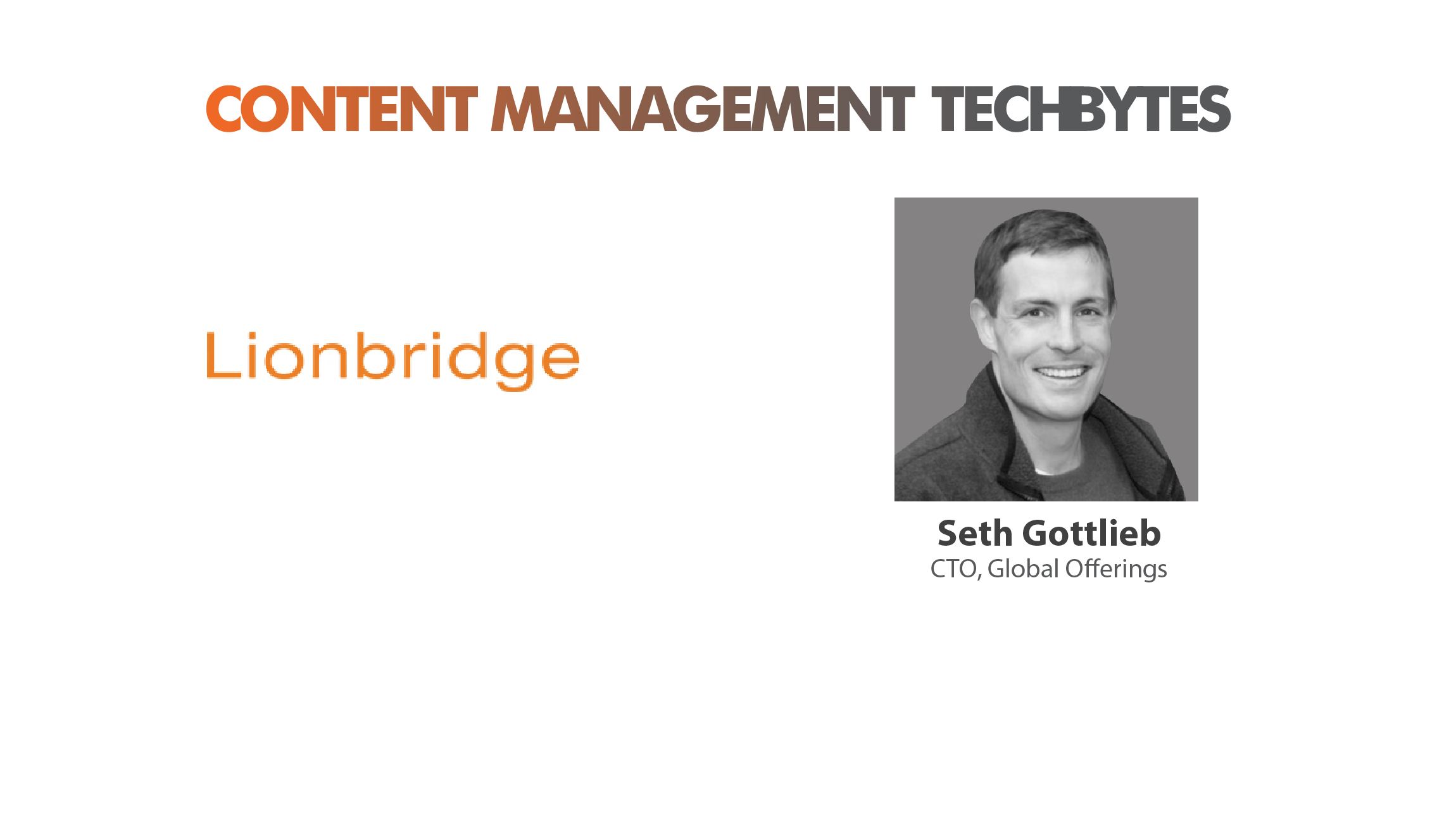Seth Gottlieb
CTO, Global Offerings, Lionbridge
In August, Lionbridge Technologies, Inc., a translation and digital communications company, was awarded the Best Global Translation Solutions Technology Provider and CV Innovation Award as part of Corporate Vision Magazine’s 2017 Technology Innovator Awards. We spoke to Seth Gottlieb, CTO, Lionbridge, to find out how they viewed the future of CMS and how to scale multi-lingual content.
Html code here! Replace this with any non empty text and that's it.
MTS: In your opinion, how does a strong CMS fit into the modern marketing organization?
Seth Gottlieb: Modern marketing organizations face a constant tension between centralized control and business units’ desire for autonomy and responsiveness. The CMS often becomes the flashpoint for this conflict — especially with the temptation of low cost, hosted website building tools that threaten to tilt the balance toward total entropy.
While it certainly helps to have a CMS platform that is both flexible and easy to use, what really matters is how the CMS is configured and managed. Access and training must extend out to the groups that need it. Content types and display templates should be flexible enough to accommodate the user experience that stakeholders want to publish. Management interfaces for “occasional users” should be pared down so as not to intimidate. Perhaps most importantly, the marketing organization should have the expertise and resources to keep up with site enhancement requests.
MTS: How should brand marketers capitalize on SEO Transcreation to make their content more scalable globally?
Seth: Transcreation goes beyond direct translation by trying to adapt the content to be more relevant and accessible to the target audience. Emphasis is shifted from semantic fidelity to how compelling and persuasive the content is in the target language. And that is the same goal of SEO: to use powerful language that attracts and appeals to a specific audience.
Transcreation is more time consuming and expensive than direct translation so you need to choose your spots. The first place to start is by generating and maintaining glossaries and style guides for all of your target languages. These tools will guide translators to use search engine optimized language in their original translations.
The next step is to identify high-value assets (such as product and conversion pages) and apply another round of editing to accentuate the most compelling brand attributes for that target audience. This includes adjusting imagery and talking more about benefits that a local audience is most likely to react to. You should also trim away less relevant content.
It is important to note that, once these assets have been “transcreated,” they take on a life of their own and need to be managed as different assets. This means that when the source language asset changes, you need to evaluate if and how the target language assets need to change.
MTS: When speaking with global brands, how would you advise them in choosing a CMS platform? How does it fit into a broader content strategy?
Seth: Before selecting a CMS, it is critical that you decide how your organization needs to manage your website. How much local autonomy will different business units and regions have? How centralized will content generation be? At one extreme, you could have a loose federation of sites tied together only by a style guide. At the other end, you will have one centrally managed website with direct translations of all of the content. This strategy should also consider how email marketing campaigns and other forms of outreach are managed.
Build use cases based on your operating model. If you are going with a loosely federated approach, you should evaluate multi-site functionality that makes it easy to put up new sites and exert the appropriate level of centralized control. You might also look at how content can be shared between sites. If you intend to have a primary site with localized versions, you should look at how the CMS helps you keep translations in sync with the source.
You should also look at how to get content to translators because, most likely, they will not be working in your CMS. At the very least, there should be some kind of export/import functionality. Preferably, you should look for a CMS that supports translation connectors that allow you send content out for translation and retrieve translated assets back.
Lastly, be sure to work with an agency that has experience building multilingual websites. It is extremely easy for an agency to unintentionally make a multilingual CMS nearly impossible to localize. In some cases, I have seen customers need to rebuild their sites from the ground up. Don’t sign off on the project until you are live in two languages.
MTS: When should localization be brought into the content strategy discussion?
Seth: Localization should be core to your content strategy. Any content strategy should address your business goals, your audience, and how you intend to reach that audience. If you intend to publish in multiple markets, you need to consider what kinds of content they will respond to and how you will produce it.
Intentions, such as changing the home page every week, have different implications for multilingual websites. The same with functionality like personalization. You should prepare to multiply the management/maintenance investment by the number of languages you translate into.
MTS: What are best practices for collaboration between content strategists and language service providers?
Seth: Involve your language service provider as early and as often as possible. At the very least, you should have the following touch points:
- Involve your LSP in the design process. They can help spot issues such text expansion, font support, and layout for right to left languages.
- Share your style guides and glossaries so that your LSP can propose how they can be adapted for local markets.
- Collaborate on your project plan and deadlines. There may be regional holidays that will extend turnaround times.
- Have your LSP review early content samples to make sure that you can exchange translatable file formats.
MTS: Thanks for chatting with us, Seth.
Stay tuned for more insights on marketing technologies. To participate in our Tech Bytes program, email us at news@martechseries-67ee47.ingress-bonde.easywp.com











